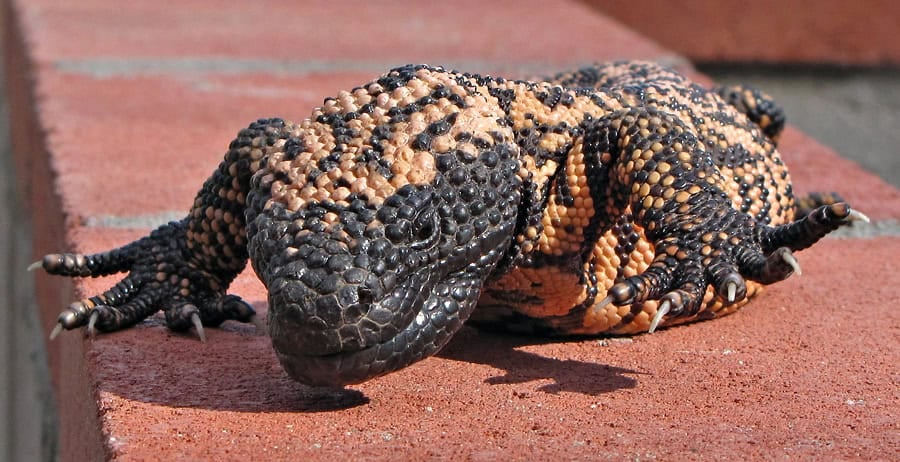The Gila Monster, with its striking appearance and unique adaptations, holds the title of the most venomous lizard in the United States. Native to the southwestern deserts, this fascinating creature captivates both scientists and wildlife enthusiasts. In this article, we’ll delve into the intricate world of the Gila Monster, exploring its habitat, behavior, and the important role it plays in its ecosystem.
Origin and Distribution
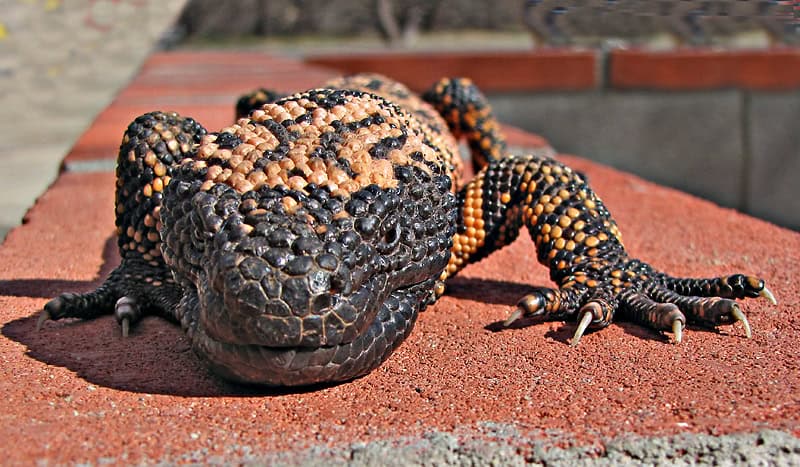
The Gila Monster (Heloderma suspectum) is a native of North America’s arid landscapes, primarily found in the southwestern United States and parts of Mexico. They inhabit desert scrublands, grasslands, and arid woodlands, with a significant concentration in Arizona. Despite their name, Gila Monsters are not restricted to the Gila River region, though that is one of the places they call home.
Physical Characteristics
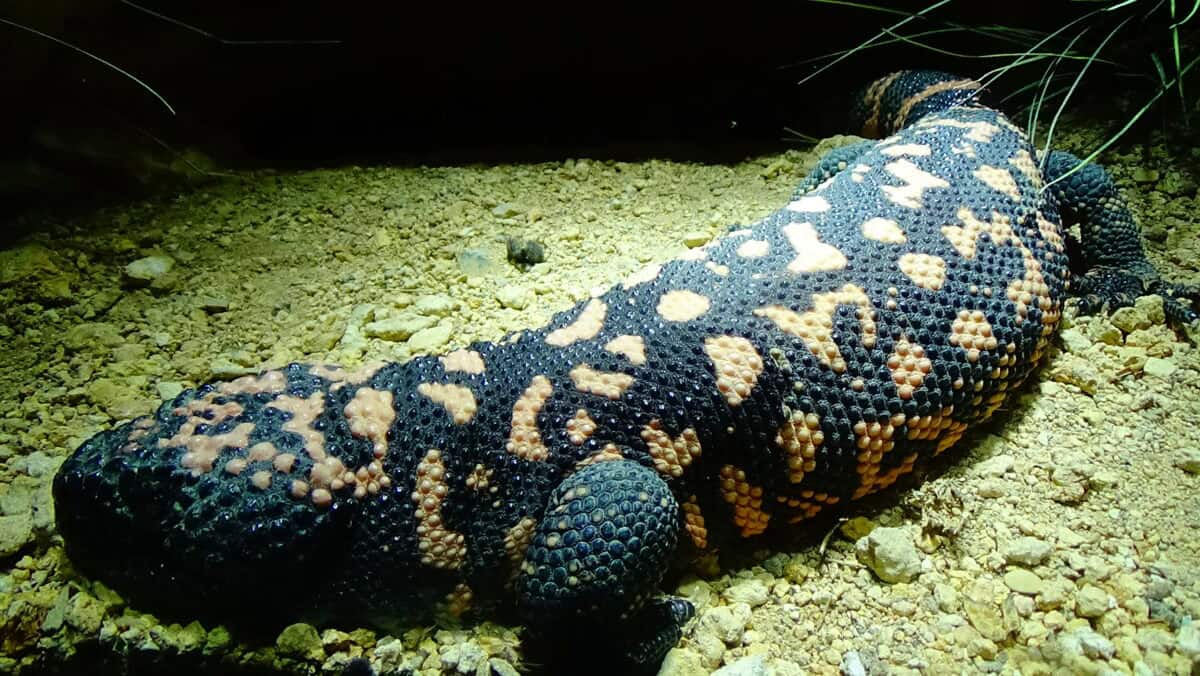
Renowned for their distinctive appearance, Gila Monsters are large, stocky lizards, usually measuring between 18 to 24 inches in length. Their skin is adorned with bead-like scales in black and vibrant hues of pink, orange, or yellow, creating mottled patterns that serve as excellent camouflage in their natural desert habitat.
The Venomous Secret

The Gila Monster is one of the few venomous lizards in the world. Unlike snakes, their venom delivery is not through fangs but rather through grooves in their lower jaw. When they bite, the venom flows along these grooves into the wound. The venom, while potent, is not typically fatal to humans but can cause significant pain and discomfort.
Feeding Habits
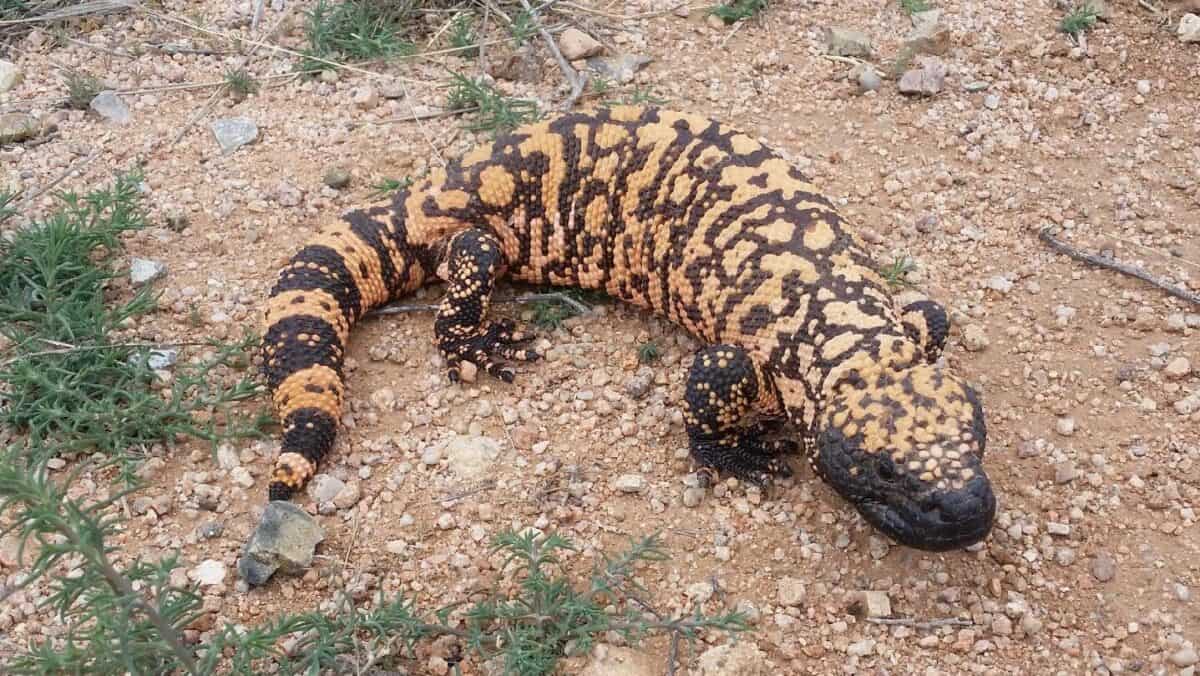
Primarily carnivorous, Gila Monsters feed on small mammals, birds, eggs, and occasionally insects. They possess a remarkably efficient digestive system that allows them to consume large meals, which they can store as fat in their tails and utilize during periods of food scarcity.
Behavior and Lifestyle

Gila Monsters are mostly solitary and spend a significant portion of their lives underground in burrows. They are crepuscular, being most active during dawn and dusk. This behavior helps them avoid the extreme heat of the desert. Gila Monsters are also known for their slow movements, a stark contrast to the rapid pace of desert life.
Reproductive Cycle

Breeding for Gila Monsters typically takes place in the spring. After mating, females lay between 2 to 12 leathery eggs in sandy soil. Remarkably, the eggs have a lengthy incubation period, often lasting 10 months before hatchlings emerge, usually coinciding with the onset of summer when resources are more abundant.
Role in the Ecosystem
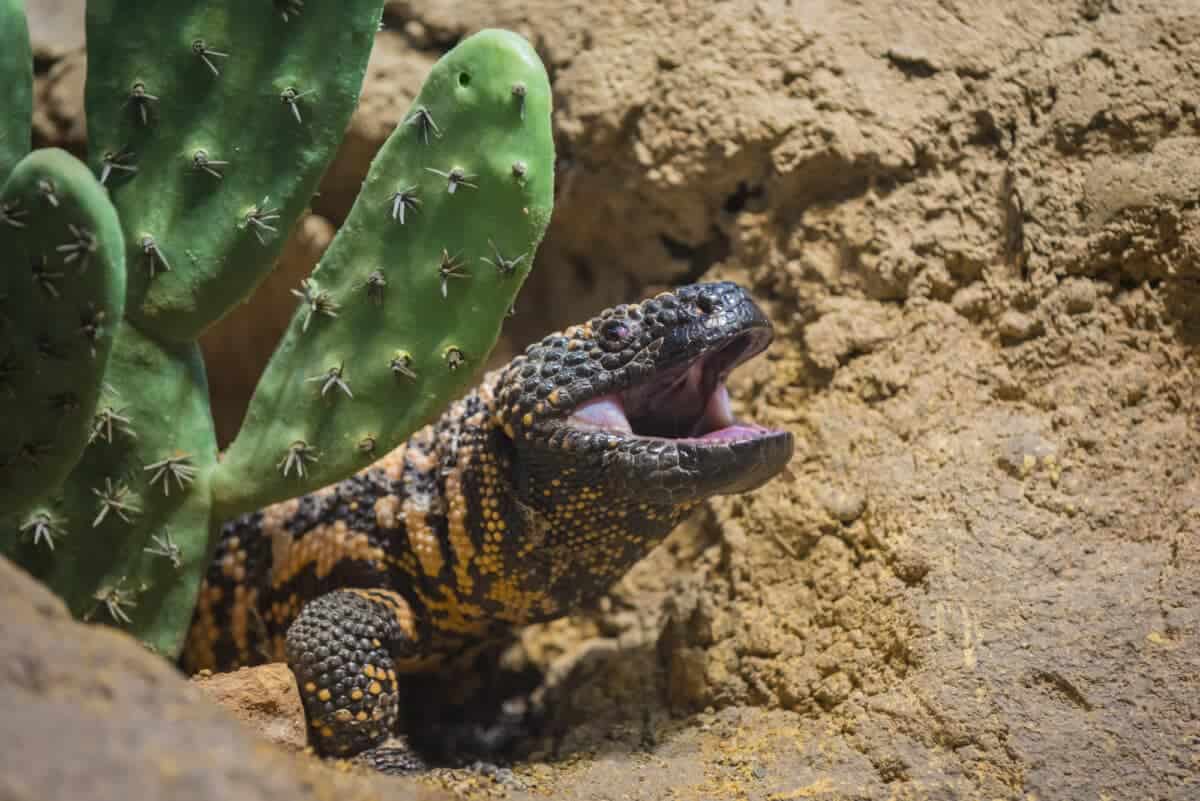
As both predator and prey, Gila Monsters are an integral part of their ecosystem. They help control populations of small mammals and birds, while also serving as food for larger predators. Their existence indicates a healthy desert ecosystem, making their conservation crucial for maintaining ecological balance.
Conservation Status

While the International Union for Conservation of Nature (IUCN) lists Gila Monsters as a species of least concern, they face threats from habitat destruction, illegal collection, and climate change. Conservation efforts focus on habitat preservation and stricter enforcement of wildlife protection laws to ensure their survival.
Interaction with Humans

Gila Monsters have long captivated human imagination and are often featured in Native American folklore. In modern times, they are sometimes kept in captivity, although this is generally discouraged due to their specialized care requirements and the potential risk posed by their venom.
Medical Importance of Gila Monster Venom

Interestingly, Gila Monster venom has contributed to medical advancements, particularly in diabetes treatment. A synthetic version of exendin-4, a protein found in their venom, is used in drugs to enhance insulin production in diabetic patients, showcasing the unexpected benefits of this lizard’s unique adaptations.
Adaptations for Survival
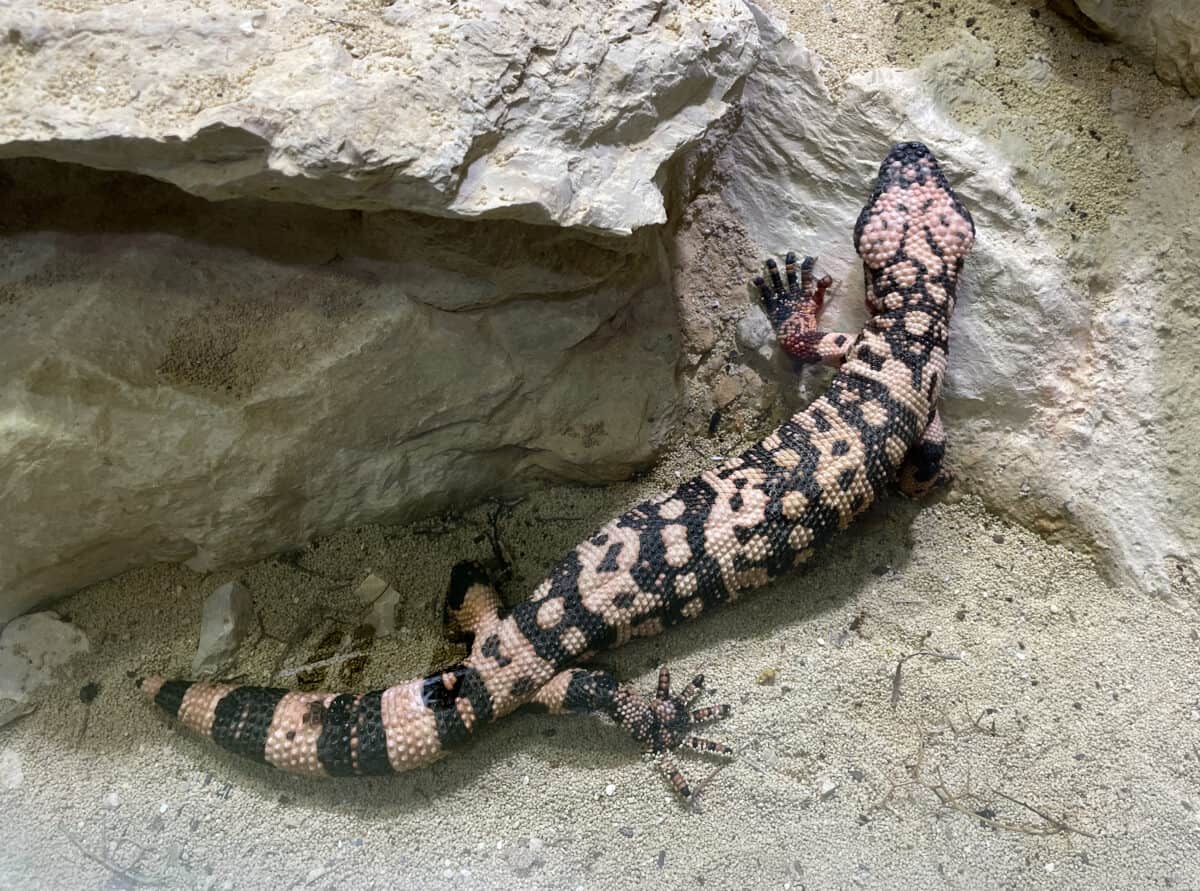
Gila Monsters have developed several adaptations to thrive in harsh desert environments. Their thick, scaly skin helps retain moisture, while their ability to survive on infrequent meals is a testament to their incredible resilience. Such adaptations make them well-suited to the demands of desert life.
Future Prospects and Conservation Efforts

The future of Gila Monsters largely depends on habitat conservation and our ability to mitigate the effects of human encroachment. Conservation programs aim to protect their natural habitats and educate the public on the importance of these remarkable reptiles, ensuring that Gila Monsters continue to thrive in the wild for generations to come.
In conclusion, the Gila Monster is a fascinating and formidable creature, embodying the unique beauty and challenges of desert life. By understanding their behavior, ecological role, and the threats they face, we gain a deeper appreciation for these captivating reptiles and the delicate ecosystems they inhabit. Through dedicated conservation efforts and respect for their natural habitats, we can ensure that the story of the Gila Monster continues to unfold in the vibrant tapestry of life in the desert southwest.
- Why Some Fish Can Walk on Land—And What That Means for Evolution - August 25, 2025
- The Biggest Freshwater Fish Ever Discovered - August 25, 2025
- A Volcano Eruption Reveals Thousands of Hidden Sea Creatures - August 25, 2025

